It’s difficult to go a week without seeing stories about new 3D printed homes. Some are for low-income housing, others are on sale or for rent, and of course, there are the net-zero homes built from the earth.
You’ve likely seen these projects and more, but is this cool new technology actually cheaper than traditional construction? And if so, how?
There are many factors that go into calculating the total cost of a construction project, with labor and materials representing the two most expensive categories. Other budget lines are devoted to liability, electrical costs, training, damage, theft, and delays.
When it comes to each of these costs, 3D printing companies claim to drastically lower expenses. Read on to find out how.
The State of Construction
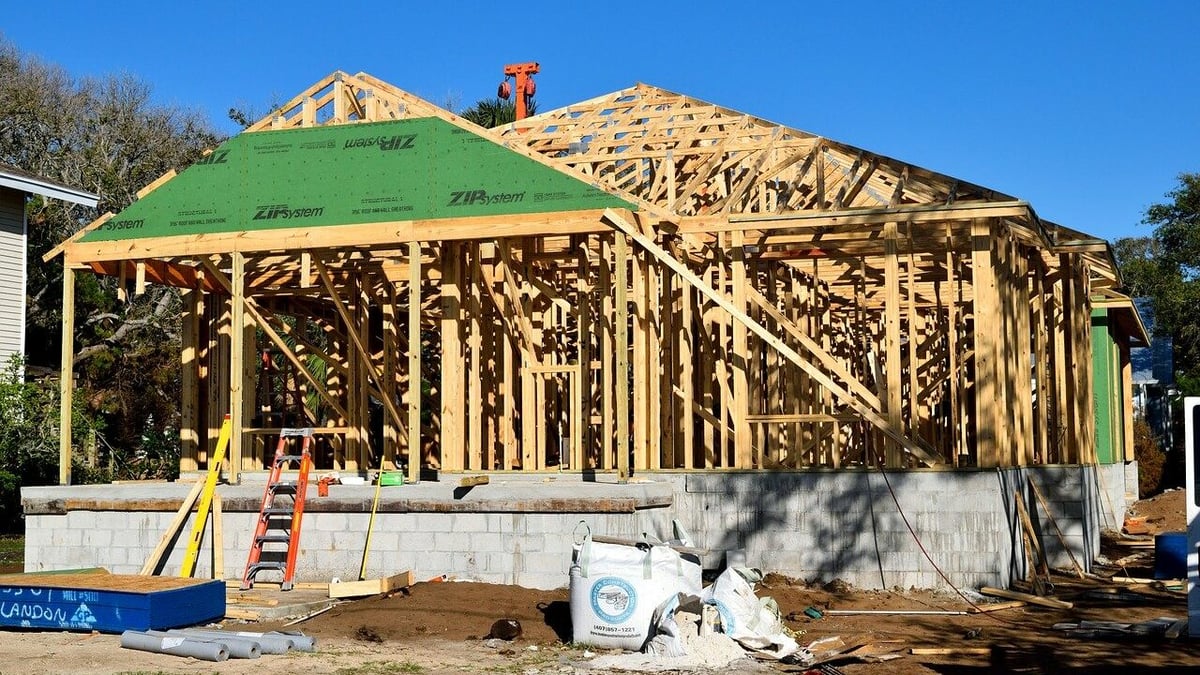
With inflation, labor shortage, and supply chain issues causing lengthy delays, traditional construction has seen better times. These obstacles facing the industry have caused the average construction time in the United States to balloon from 7.7 months in 2018 to as long as 10.7 months in the Northeast of the country in 2021. That’s a 29% increase!
Several different phases of construction occur over these many months, starting with clearing the site and pouring the foundation. Then, constructing the frame begins, followed by putting up drywall and insulation, plumbing and electrical work, installing the flooring, roofing, painting, landscaping, and finishing the exterior façade.
Each of these stages requires different sets of workers with different skills, and coordinating all of them adds to the delays and costs typical in construction.
What's 3D Printed?
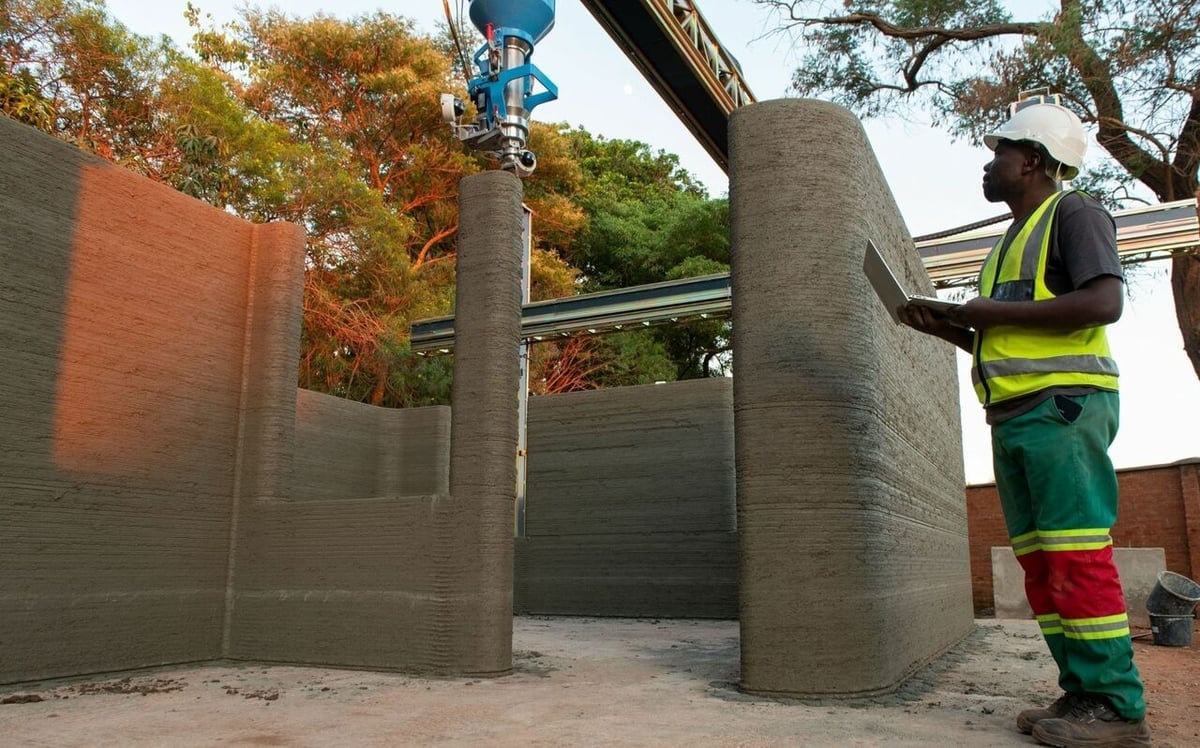
With all of those complicated steps and tasks taking almost 11 months to build new homes, 3D printing has come along like a savior promising faster and cheaper houses. But which steps does 3D printing actually replace?
3D printers aren’t going to be clearing a construction site of existing obstacles like trees or boulders, and they aren’t cleaning the ground of hazards either. But after that, they’re able to eliminate quite a few steps.
3D printers can reportedly lay the concrete (or whichever material is being used) foundation, then continue up to construct the frame. In traditional construction, framing means fitting together smaller pieces (usually lumber) to form the shape of the house and build a support structure. The next steps, like drywalling, then fill in the frame to create solid walls that retain heat and provide proper privacy.
With 3D printed homes constructed layer by layer, there’s no longer a need for framing or drywalling because the walls are printed continuously from the ground up without requiring guides more complicated than some rebar to support the concrete. With these steps combined into one, the time savings result in significantly lower costs.
Specialized tradespeople are still needed to come in for the plumbing and electrical, but with 3D printing there’s also no need to add siding to the exterior façade, cutting out one of the final time-consuming steps.
Hours Spent Building
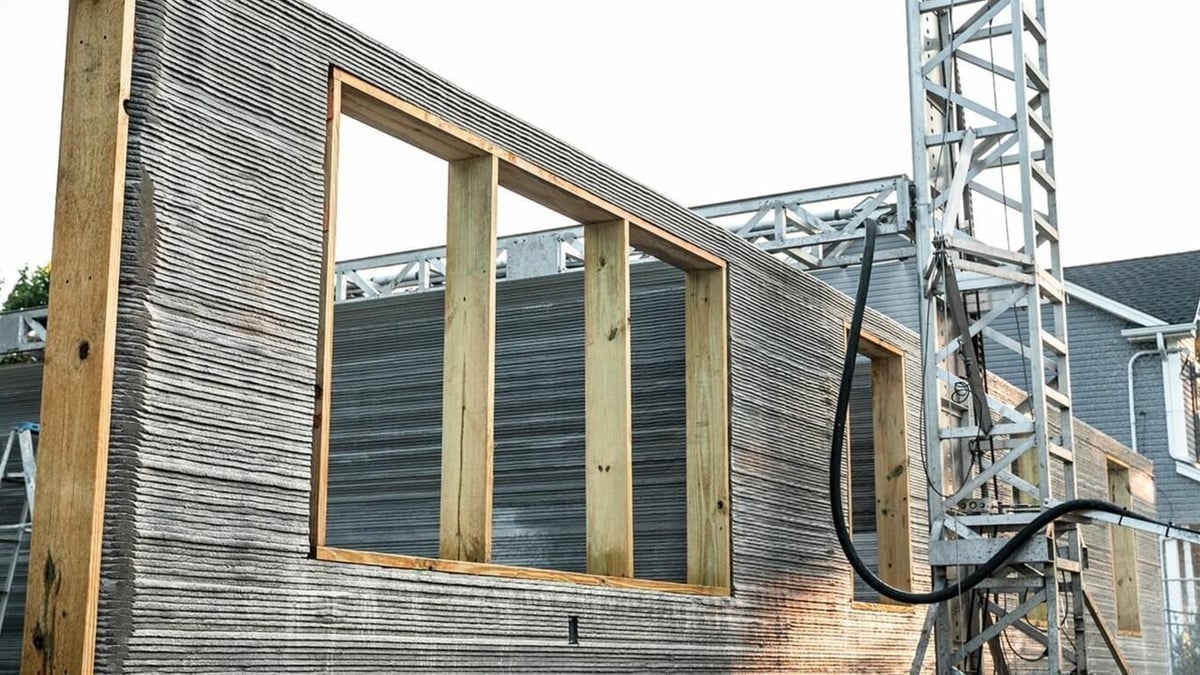
So how long do these steps take? According to Uphomes, planners normally budget 28 to 60 days for pouring the foundation, then framing the home takes another 5 to 8 weeks. After the structure is plumbed and wired, the builders come back in to put up the drywalling before moving outside to build the exterior façade with decorative pieces like bricks, stucco, or siding. These steps usually take another one or two weeks each.
Convert all those steps to 3D printing, and companies like SQ4D can build a typical 1900-sqft home in 48 hours over about a week. Because 3D printers are significantly quieter than traditional construction equipment, in some locations companies can even secure permits to continue printing the home overnight without interruption.
Other 3D printers have similarly short time frames. Black Buffalo budgets 5-10 days for 3D printing homes, while COBOD claims that a 500-sqft home can be printed in a day. Icon has printed houses of the same size in 24 hours spread across a handful of days.
Paying a construction crew for only a week’s work not only slashes payroll costs, but it also has a host of other cost-saving benefits that we’ll explore below. With construction reduced from 5 months to 5 or so days, 3D printing is ready to bring average construction timelines back below 7 months, and reduce budgets accordingly.
Preparation
Before getting too excited about printing houses in just days, it’s important to remember that 3D printers are like any other manufacturing equipment and require time to be set up, as well as regular maintenance and cleaning.
These delays don’t represent large obstacles, but it’s important to budget around four hours to set up COBOD’s BOD2 printer, for example. This is an adjustment from traditional construction, where crews are typically able to grab their tools and get started as soon as they arrive or spend only a few minutes getting equipment ready before operating it.
After they’ve done the day or two of printing, machines need to be completely emptied and cleaned of concrete, which can take around half an hour. These setup and maintenance times are the tradeoffs builders will have to accept, knowing it means far fewer hours of construction over the course of the project.
It’s difficult to find comprehensive information on maintenance online because this is a new technology that’s ever-evolving, but machines such as the BOD2 and SQ4D’s ARCS are built to last long-term and come with lengthy user manuals offering the best maintenance tips for continued success.
Workforce
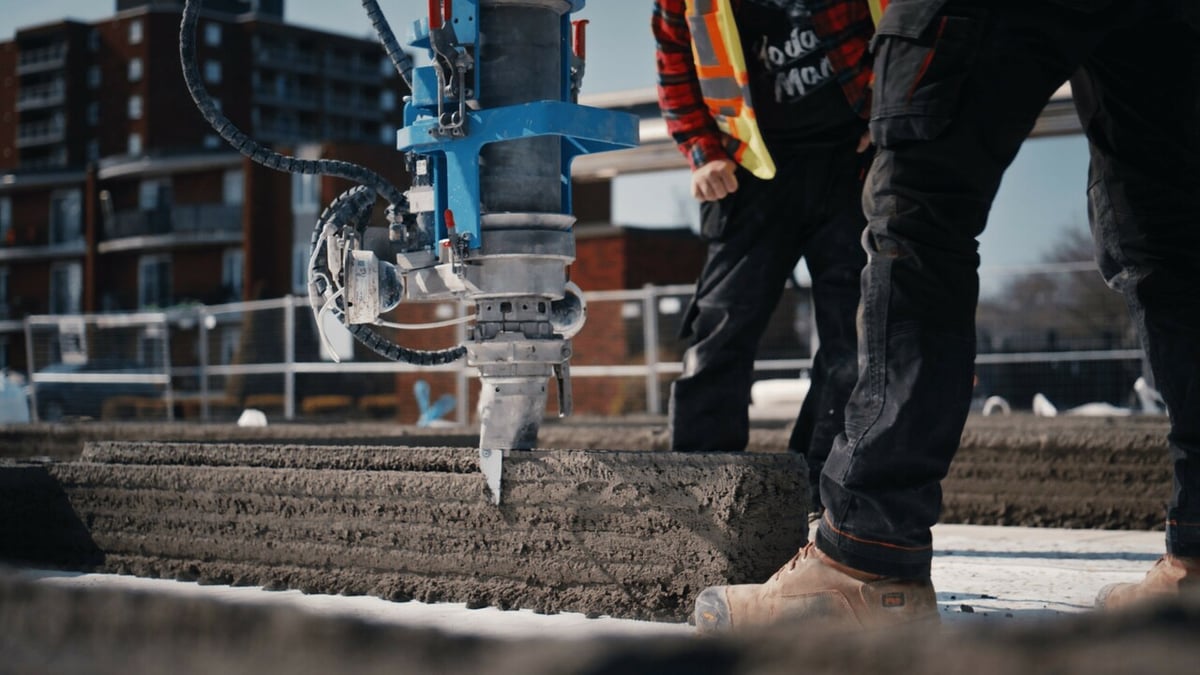
In traditional construction, labor represents around 40% of average building costs, the largest budget item after materials. Companies like Black Buffalo and Winsun both claim to cut these expenses by up to 80% with 3D printing.
An 80% reduction in labor costs is extraordinary but believable when you realize SQ4D‘s ARCS printer and Icon‘s Vulcan printer both only require three workers to be on-site to monitor the machines while they’re printing, and COBOD‘s BOD2 only needs two people. Not only are crew sizes slashed, but these workers are only needed for the two days the printers operate, rather than the weeks to months it takes to frame and drywall a home.
Crews of dozens of people working for five months sounds like a lot when compared to two or three printer operators working for a week. It’s easy to determine the cheaper option.
Liability
Another bonus of fewer workers in shorter timeframes is drastically reduced liability costs for construction companies. The math is simple: It’s cheaper to insure one 3D printer with two or three operators for a single week than to insure a far larger group of workers with several machines over five months.
Naturally, SQ4D‘s 3D printed construction sites see far fewer workers’ compensation claims from injury or accident.
With shorter policies insuring less overall value, it can’t be long before insurance adjusters become major cheerleaders for 3D printed buildings.
Worker Training
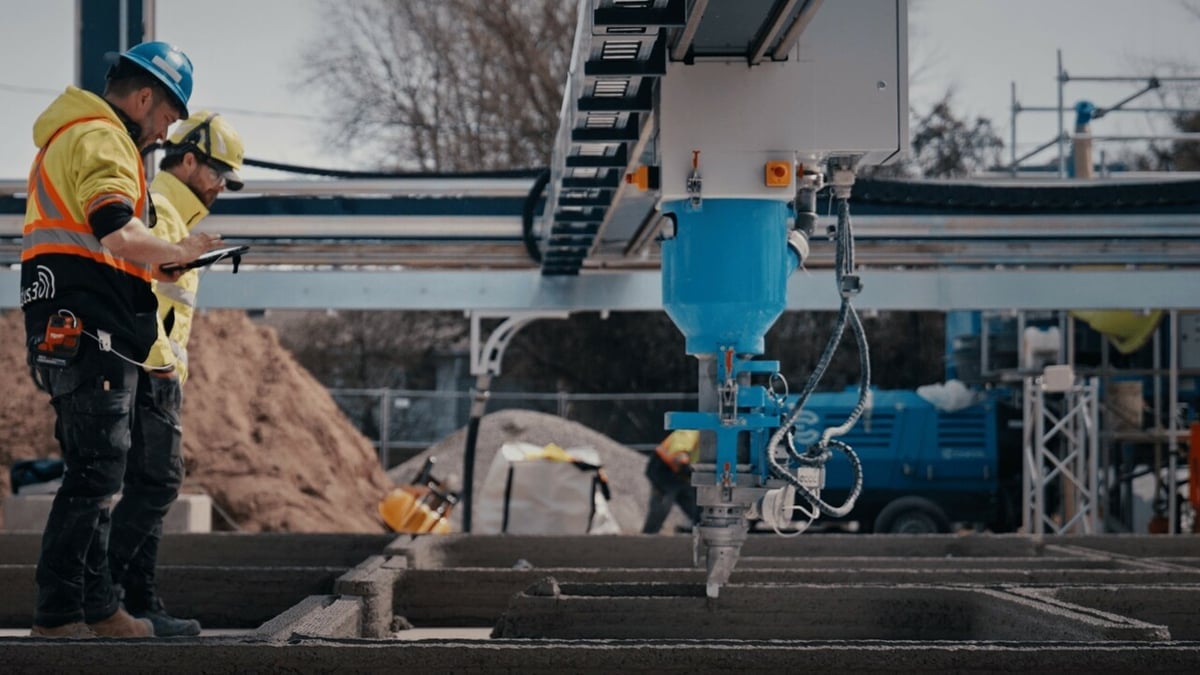
There are many different types of tradespeople that are essential on a construction site, many of which require years of education and experience to be fully accredited. As we’ve already mentioned, technical trades like electricians and plumbers can’t be replaced by 3D printers, but some others can be, representing a one-time upfront cost rather than a continuous costly budget line.
We’ve already seen this replacement occurring on select projects in Europe, where a major shortage of bricklayers is causing significant construction delays. Some projects are mitigating these delays by turning to 3D printers.
The average home had 24 tradespeople subcontracted to help build it in 2020. While we can’t 3D print the plumbing or electrical wiring (yet), some of those workers involved in the foundation or siding, alongside masons and bricklayers, won’t be as needed in 3D printed construction.
And while hiring more experienced (and therefore more expensive) tradespeople is known to significantly reduce timelines in traditional construction, according to one company, any builder can be trained to operate the 3D printers in a few days.
These differences in required training and experience represent another significant means of cost saving for 3D printing homes as opposed to traditional building practices.
Materials Cost
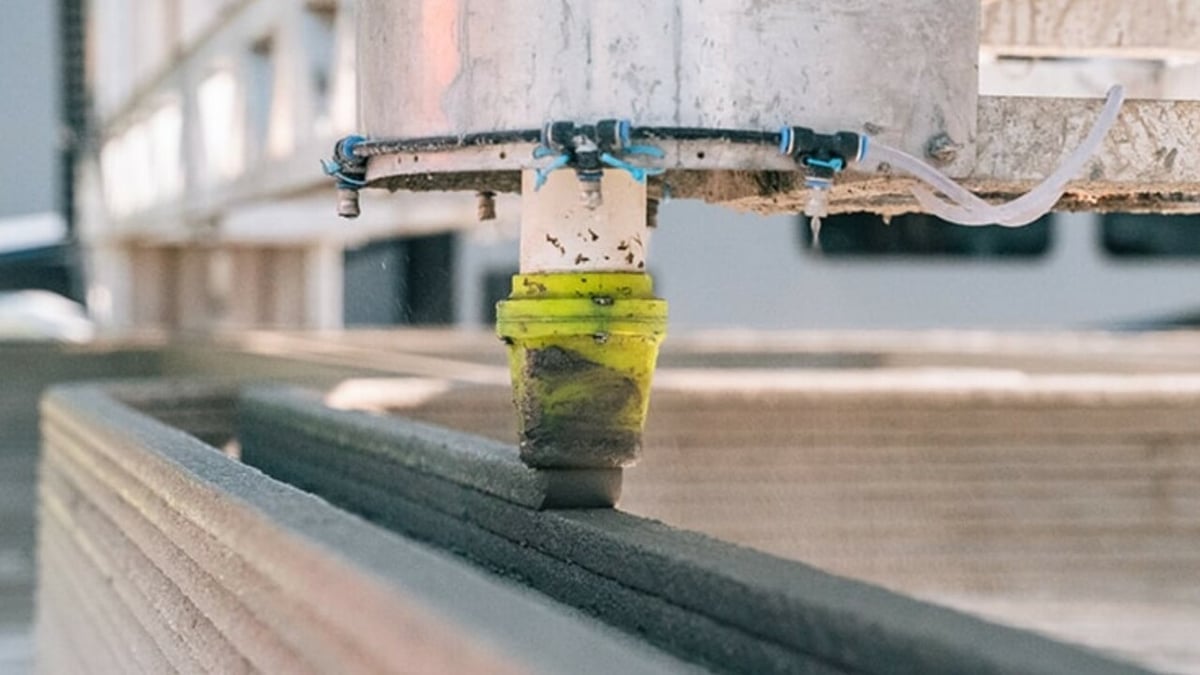
Along with labor, materials represent the greatest costs to builders with 40% to 50% of project budgets devoted to materials. For an average two-story home, materials usually cost $140,000. In contrast, COBOD‘s first four projects had an average material cost of $1,300.
Before your eyes burst out of your head, these numbers require a bit more context. First, COBOD’s projects were smaller single-story homes. Second, COBOD only calculated the cost for the materials they used, not the total for the project. This means their figure excludes all the plumbing, electrical works, painting, and roofing expenses, not to mention the cost to purchase the appliances people expect their homes to come with, like furnaces and hot water tanks.
It’s difficult to compare apples and oranges, but with the skyrocketing costs of lumber and inflation hitting most materials, expect these numbers to grow further apart. 3D printing cement is actually coming down in cost as the new formulas proliferate and find widespread adoption.
COBOD is already claiming up to 90% savings on only the materials needed to build foundations, frames, and siding. Black Buffalo‘s figures are more modest but still reduce material costs by over 50%.
Damage & Delays
In traditional construction, materials loss, damage, and theft are such a concern that they represent over 10% of materials budgets. With 3D printing, where the cement mixture is fed through the machine, so many opportunities for damage or waste are removed that Black Buffalo estimates 90% of materials losses are avoided while Mighty Buildings claims closer to 95%. SQ4D shares this sentiment with its trademarked “Zeero Waste” printing process, and Icon plans for zero waste in its construction budgets.
Considering materials budgets average around $140,000, eliminating all of this wastage makes 3D printing directly responsible for over $10,000 in savings on the average project.
Further savings come from 3D printers only needing one material to operate, avoiding the costs that come from delays in specific materials arriving on the construction site when the crew is ready to work.
Energy Costs

With gas prices hitting highs around the globe, the diesel engines of traditional cement mixers and other construction equipment are putting pressure on construction budgets. Not so with 3D printers. Rather than gas, most of them run on electricity, like Black Buffalo‘s Nexcon printer which only uses 10 kW an hour. For a better perspective, SQ4D‘s ARCS printer is claimed to use the energy equivalent of running a blow dryer through your hair.
Plus, the potential of printing overnight means drastically lower electricity costs in regions with time-of-use pricing.
And the energy savings don’t disappear when the 3D printer leaves the construction site. By building in continuous layers, 3D printers create an unbroken thermal envelope that apparently offers far greater heating and cooling efficiency than current construction methods. Combined with concrete’s already high thermal mass, 3D printing methods and materials are said to offer far more energy-efficient homes that won’t require as much artificial temperature control. By adding solar panels to the roofs, Mighty Building‘s homes are even able to achieve net-zero energy consumption.
Verdict
In spite of the previous comparisons, because of the core differences between 3D printing and traditional construction methods, it’s difficult to come to a definitive statement regarding which system is overall cheaper than the other.
For 3D printed houses, there are savings courtesy of labor hours being reduced to as few as three employees for just a handful of days, and they typically require less experience, training, and insurance. Cost reductions may also arise from using building materials that are 50% to 90% cheaper than traditional ones, cutting damage, waste, and on-site energy usage by a significant margin. Yet the machines, their transportation and setup, and the materials can’t be dismissed or ignored.
While there may be a fear that 3D printing houses will lead to a complete change in the industry, whatever changes come about are unlikely to be overnight.
License: The text of "Are 3D Printed Houses Cheaper?" by All3DP is licensed under a Creative Commons Attribution 4.0 International License.


